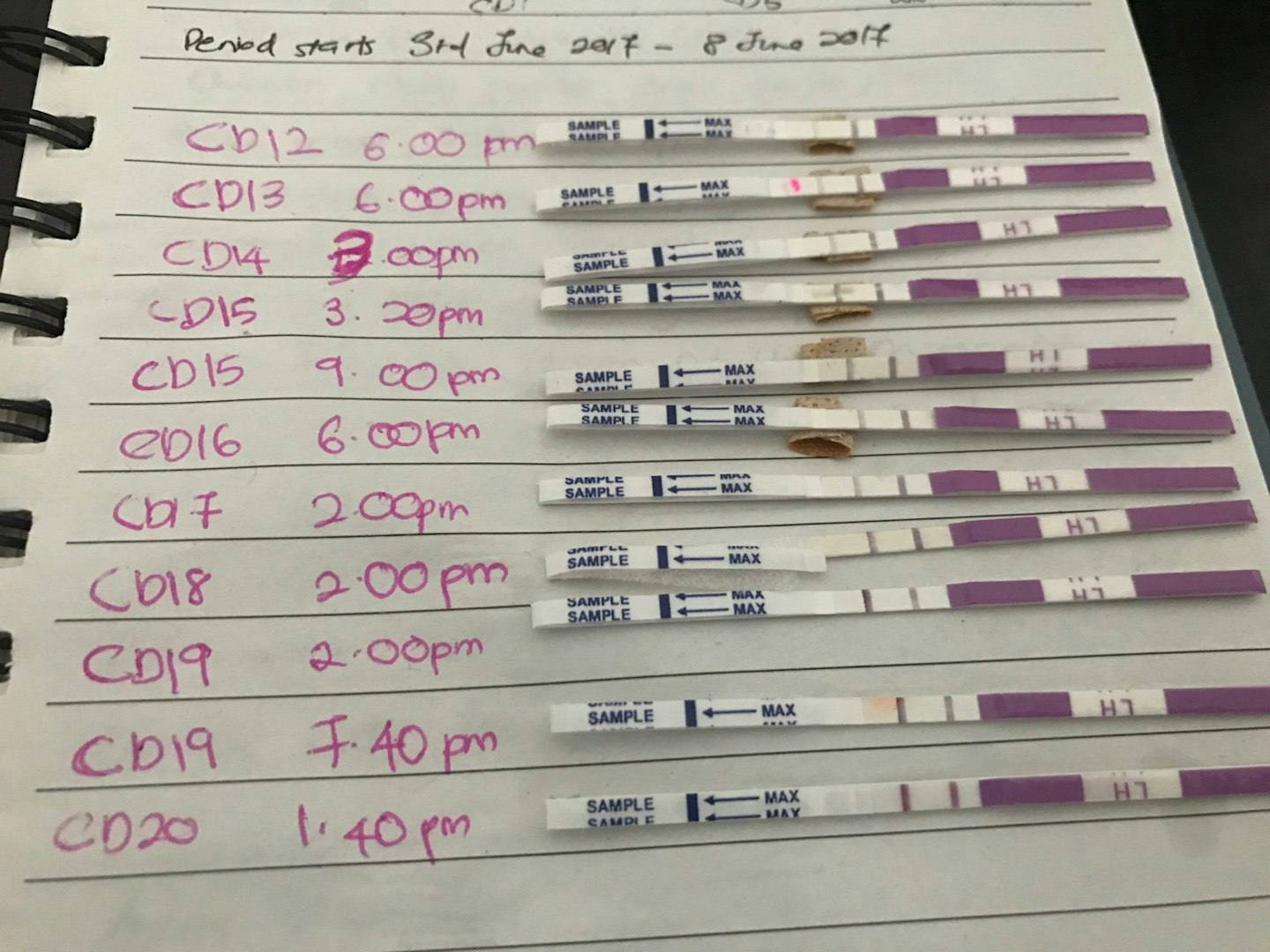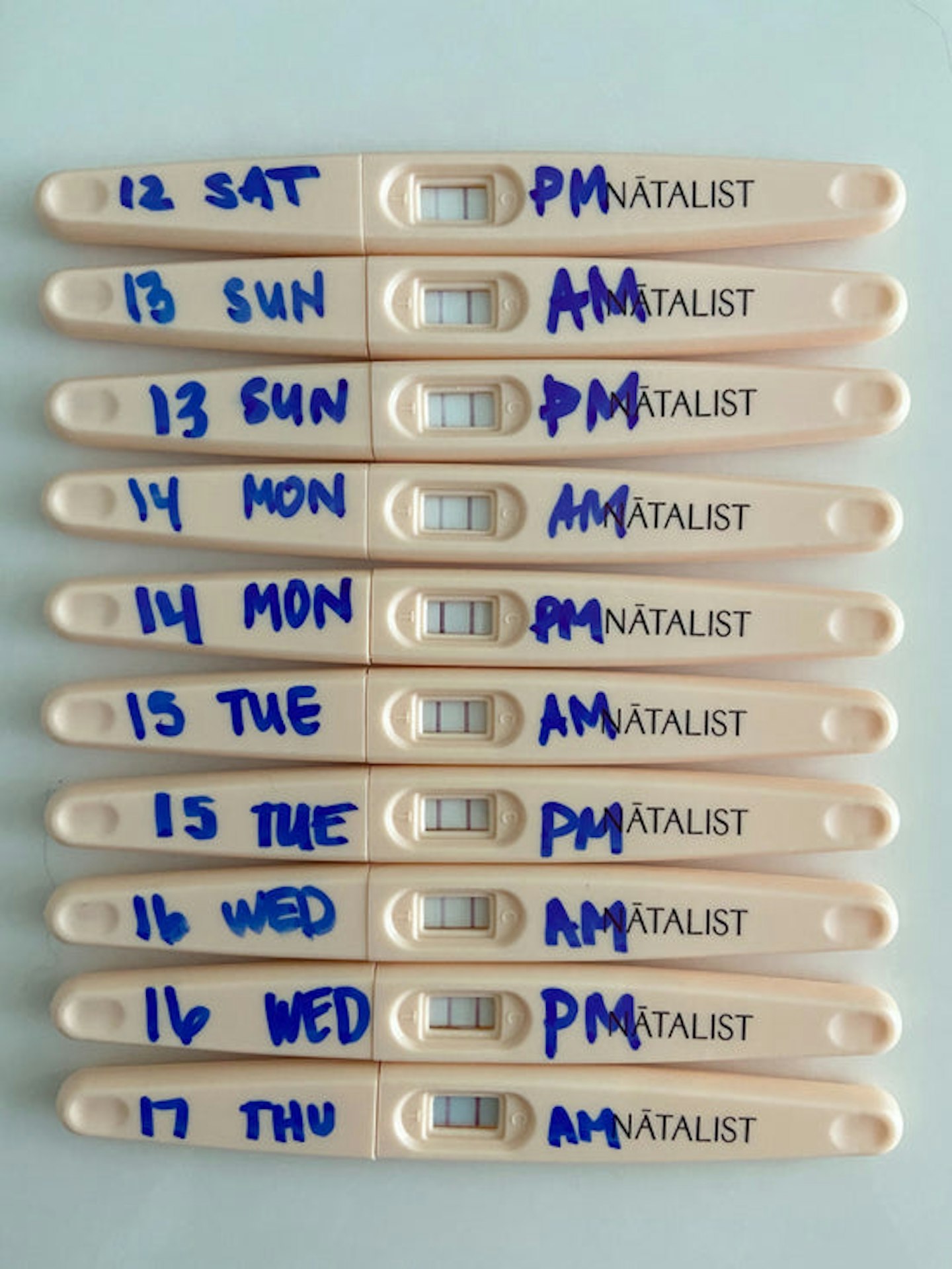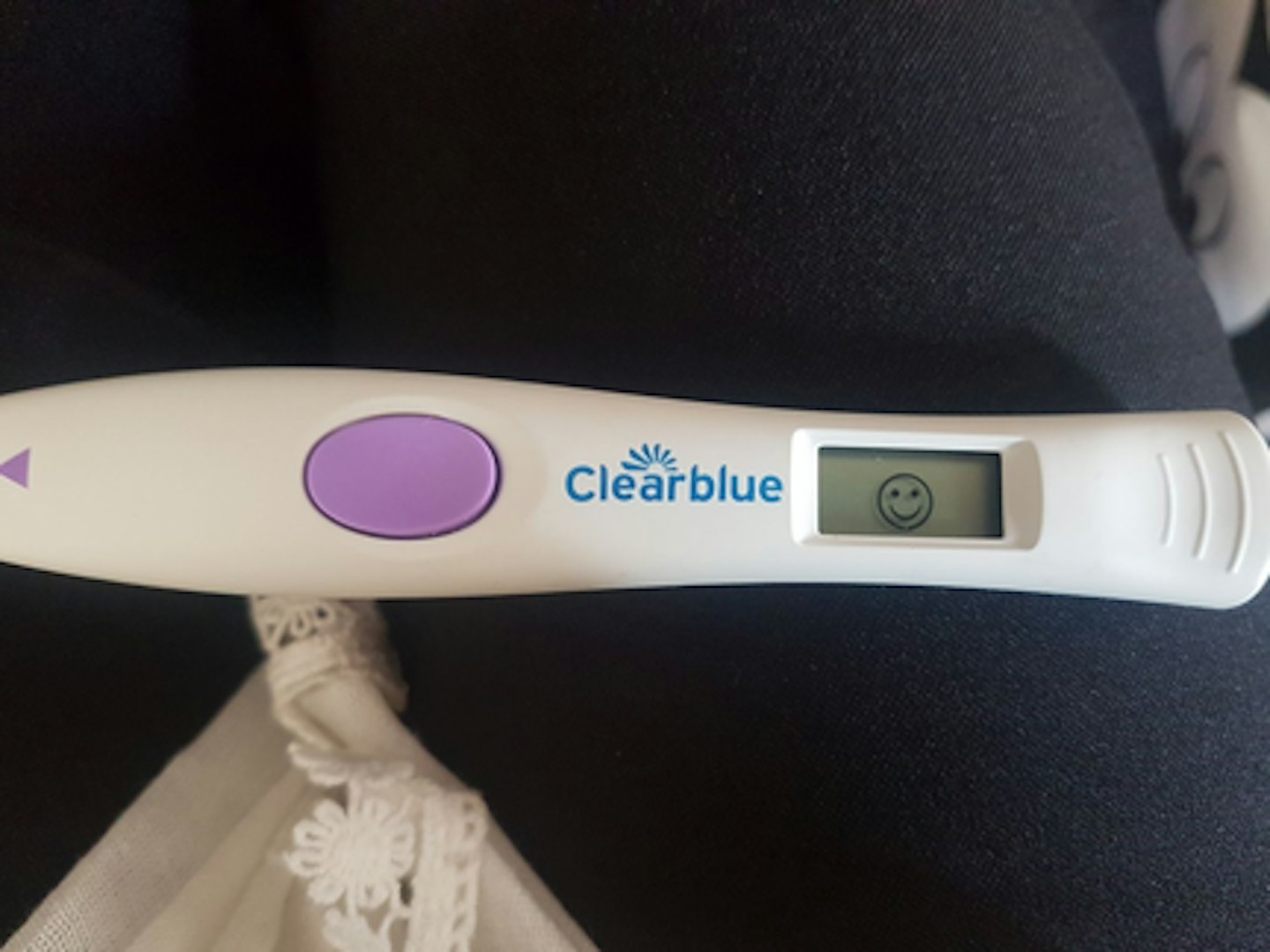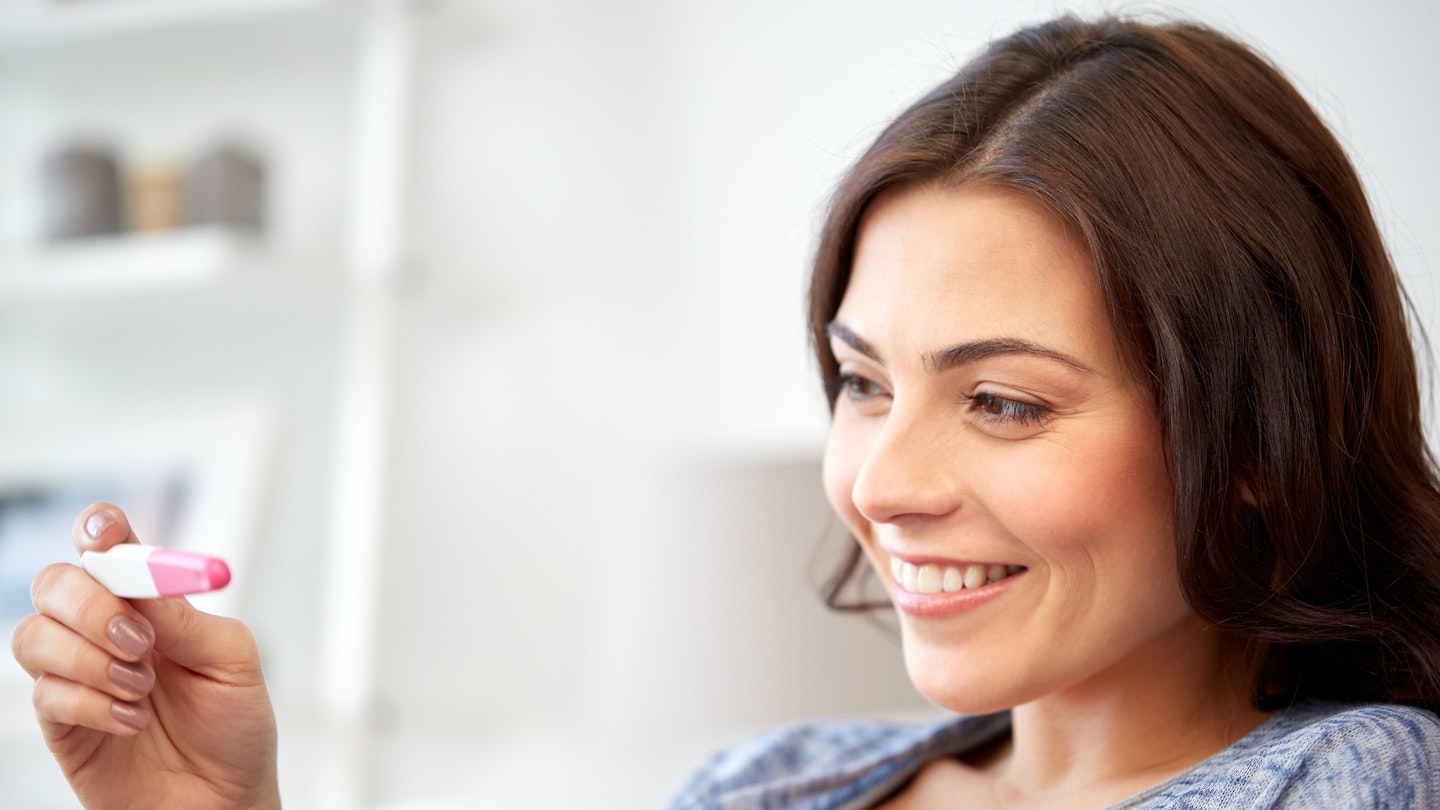An ovulation test (aka ovulation predictor kits or OPKs) is an affordable way to determine your most fertile window. OPKs mainly come in the form of urine tests, but saliva test kits are also available (although these are sometimes less effective).
It’s helpful to know what a positive ovulation test actually looks like and how it works, so you know when the best time you’re most likely to conceive.
How do ovulation tests work?
Urine-based ovulation tests are the most common, they test your wee for a surge in the luteinising hormone (LH), which signals when you are about to start ovulating. This is detected one or two days before ovulation.
Whilst a small amount of LH already exists in urine, the amount increases by two to five times in the few days before ovulation, which is how the test can reliably identify your most fertile window. During this window, you are most likely to conceive.
Salivary ferning kits are another type of OPK. These operate rather by monitoring the rise in your oestrogen levels both before and just after ovulation. You test your saliva with a tiny, portable microscope and if your oestrogen levels have risen, the salt content of your saliva increases. When the salt dries, it crystallises into a fern-like pattern, letting you know that you are now in your ovulation window. If you are not in your fertile window, the saliva will just dry in shapeless lumps.
What does a positive ovulation test look like?
A positive ovulation test may vary depending on the brand and product you’ve opted for.
The urine-based, paper strip test is the most common and displays two lines once your urine sample is taken. If this test is positive, both the control line and the test line will be exactly the same in colour and intensity. The test line can sometimes be darker in colour than the control line, which is still considered positive. However, if the test line is lighter in colour then this usually isn’t considered a positive ovulation test.
You can also get digital ovulation tests, which are more expensive than paper tests. If these tests are positive they will either display the word ‘yes’ or a smiley face. A lot of women prefer these tests though as they’re easier to read.
Positive ovulation test examples
Netmums

User Abiraami H shared her 10 days worth of ovulation tests on the popular parenting forum, Netmums. The brand name of the test isn’t shared, however this type of test is similar to other OPKs where the control line and test line both remain the same intensity.
Natalist

In this post from Natalist, eight women shared a picture of what their Natalist brand ovulation test results looked like over a 7 to 10 day period. The control line is marked with a ‘C’, whereas the test line is marked with a ‘T’.
As you can see from the images, the test line is a lot darker on the days LH is surging, compared to at the beginning where the line is extremely light.
Pregnancy Forum

User Mariexo shared an image of her Clearblue ovulation test on Pregnancy Forum. This is a digital ovulation test, which is also positive, hence the happy face.
What does a positive ovulation test mean?
If your ovulation test is positive it means that your luteinising hormone is ‘surging’, which means you’re likely to ovulate in 24 to 36 hours, so you should plan sex accordingly.
Why are Ovulation Prediction Kits helpful?
It’s extremely useful to be able to schedule sex when you know it is likely to make the most difference, which is where OPKs come in, as the test allows you to pinpoint your fertile window every month (the days during your menstrual cycle when pregnancy is most possible). Therefore having sex during these time frame increases your chances of getting pregnant.
Read more about why ovulation is important for conception here.
If you are using donor sperm or being artificially inseminated, OPKs, as well as blood and urine tests at the doctor’s office, will also be used to determine the most successful window for AI.
How to use OPKs
Urine-based OPKs
These are rather like pregnancy tests, simply wee on a stick and coloured bands will appear on the stick to indicate whether or not the LH surge is occurring. If you are using a digital OPK, they usually use symbols, such as a smiley face to let you know when you are on your most fertile days. Generally, you should try to collect your wee between 10am and 8pm. The recommended optimum time is between 2pm and 2.30pm.
It is recommended that you try to collect your wee at about the same time every day, for added consistency, but this is not absolutely crucial. A few more tips - don’t do the test as soon as you wake up and try and reduce the amount of liquids you drink for about four hours before you do the test. Too much liquid could dilute your urine, which may make it more difficult to detect the LH increase.
Afterwards, read the results within ten minutes and throw the test away once you’ve read it, as sometimes faintly coloured bands start appearing sometime after, which can deceive you about the result.
Unlike with pregnancy tests, you will always see two lines on an OPK - the colour of the second line is what determines the point you are at in your ovulation cycle.
In the below video, mummy vlogger Victoria Ciftci brilliantly explains how to interpret your ovulation test results and what a positive ovulation test looks like:
Salivary Ferning OPKs
Using a salivary ferning OPK is easier, simply place some of your saliva on the slide, either using your finger or licking it. Do this first thing in the morning, before you’ve had anything to eat or drink. Make sure you don’t put too much saliva on it and that it is free of any air bubbles for the best result.
Then, you wait for the saliva to dry and use the microscope to see whether there is any ‘ferning’ or not. You can compare your slide with examples in the instructions to see whether you are ovulating or not that day.
With both types of OPK, the best time to start testing is on day 11 of your cycle and you can carry on for six days. Our ovulation calculatorwill help you with that.
How certain medications can affect OPKs
Although over the counter drugs like paracetamol won’t affect the tests, those containing Human Chorionic Gonadotrophin (hCG) or LH can have an effect on your result. Equally, some fertility drugs can also skew the test results, so make sure you check the back of any medication before taking the test.
Urine-based LH tests are 99% accurate at detecting ovulation. Salivary ferning tests aren’t as accurate, as the process of ferning may happen at other times in your menstrual cycle, especially if you are taking fertility drugs. One thing to note is that if you have poor eyesight, salivary ferning kits may not be the best method to choose.
How much do ovulation tests cost and which brands are best?
Standard urine-based OPKs are priced between £10 and £15 per cycle. Most brands offer the same level of reliability, so definitely pick the one that offers you the most tests for the least amount of money. Brands like Clearblue lead the way on the market, with easy-to-use test kits that are able to identify four or more fertile days.
On the market at the moment, we recommend the Clearblue Digital Advanced Ovulation Test for ease of use and for best value for money, the One Step Highly Sensitive Ovulation Strip Test.
Salivary ferning OPKs can be better value. After the initial cost of between £20 to £35 for the microscope, you should be able to use it again and again. However, if it takes you a long time to conceive, you might have to replace it after about two years. We recommend the Fairhaven Health Fertile-Focus Ovulation Microscope.
